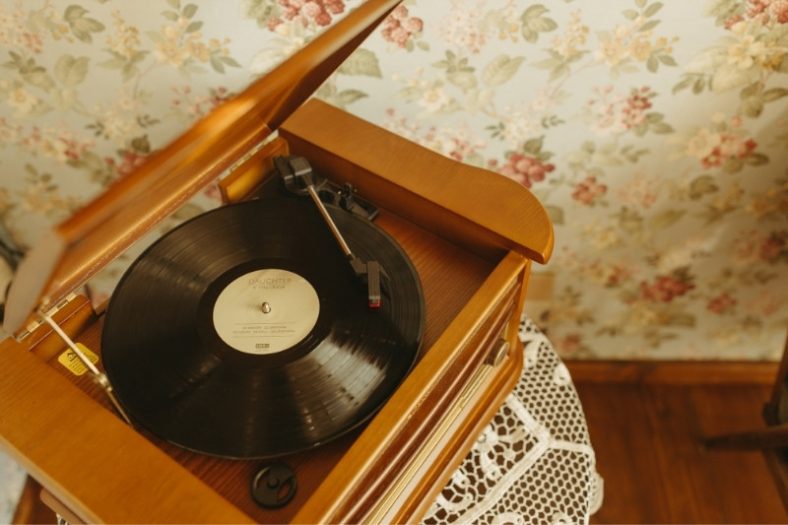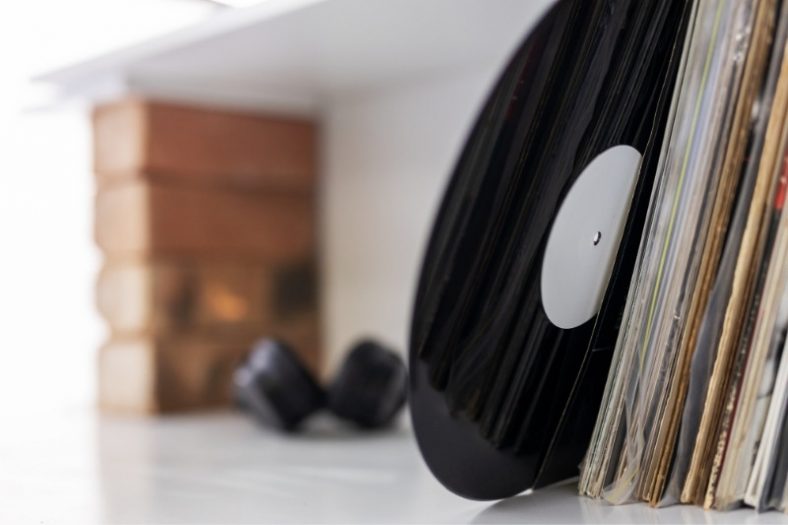What is a B-Side in Music?

The B-side is a secondary recording that gets less attention than the main music releases of an artist (which are referred to as the A-Side tracks).
The term B-side originated from its use in vinyl records. The listener would need to physically flip around the record to the opposite side to listen to the remaining tracks on the release.
B-sides have now become a more general term to refer to music releases outside of the main singles and tracks that an artist wants to heavily promote.
That said, there are many cases of B-side records that have achieved great success. Such as ‘We Will Rock You’ by Queen, ‘Hound Dog’ by Elvis Presley, ‘The Man Who Sold the World’ by David Bowie (originally released as a b-side). Read this article to see more.
Contents
A Brief History

Original recordings consisted of single-sided records, whereas double-sided recordings came further down the line around 1910. However, they did not achieve popularity until the 1930s.
They were still 10-inch recordings, further down the line around 1950 the 12-inch vinyl record was introduced as well as the popular term we know today as “a single”.
Nevertheless, the same issue was still at hand, the A-side would receive more attention than the B-side.
The reason for this is because the A-side held the song the record company wanted to promote more while the B-side consisted of all the other songs or different versions of the song, including acoustic, or even instrumental versions.
It was not long before the invention of cassettes and compact discs around 1980 were introduced and the A-side/B-side conflicts dialed down.
Why Fans Love B-side Records
B-side releases offered musical artists 2 main things:
Firstly, it simply offered fans more value for money when they bought a record. They could buy additional tracks to listen to and enjoy. This has changed a little, due to the music industry moving to stream, but the concept still stands.
From a creative aspect, B-side records give artists additional leeway to be more artistic and creative with their songs.
They could take a safer approach when releasing A-Side records, by releasing tracks that they think could get good mainstream or commercial music success.
They could then release more alternative, more raw, more experimental, or even live versions of songs as B-side releases.
As a result of this dedicated fans of bands have often come to greatly enjoy the B-side records, and in some cases enjoy B-side records even more than the main A-side releases.
What Type of Music is Released as B-sides?

B-side records often include completely new songs, but they can also include live recordings, alternative versions, or alternate mixes.
The type of B-side record will certainly vary based on the style of music that you’re listening to. For example, a singer-songwriter or a band might be more likely to have a live recording on the B-side. Whereas a music producer or dance electronic act might be more likely to have a remix in their B-sides, either by themselves or by a collaborating artist.
What are Kpop B-sides?
The A-side on a Kpop album is the main title song. The B-sides are all of the remaining songs on the album, which does not get promoted as much.
Therefore, the A/B side for Kpop follows the same usage as other genres in the industry. Meaning that the A-side is more focused on, and as usual, the B-side tends to be neglected. Although, this is nothing new.
Summary
The B-side is a secondary recording that gets less attention than the artist’s primary music releases (which are known as the A-Side tracks).
The term B-side originated from the practice of flipping vinyl records. To hear the remaining songs on the release, the listener would need to physically turn it over to the other side.
B-sides are now used in a much more generic sense to refer to music releases that aren’t part of an artist’s primary singles and tracks but are still highly promoted.
The conflict was always the same, the A-side got more attention, whereas, the B-side was often neglected.





